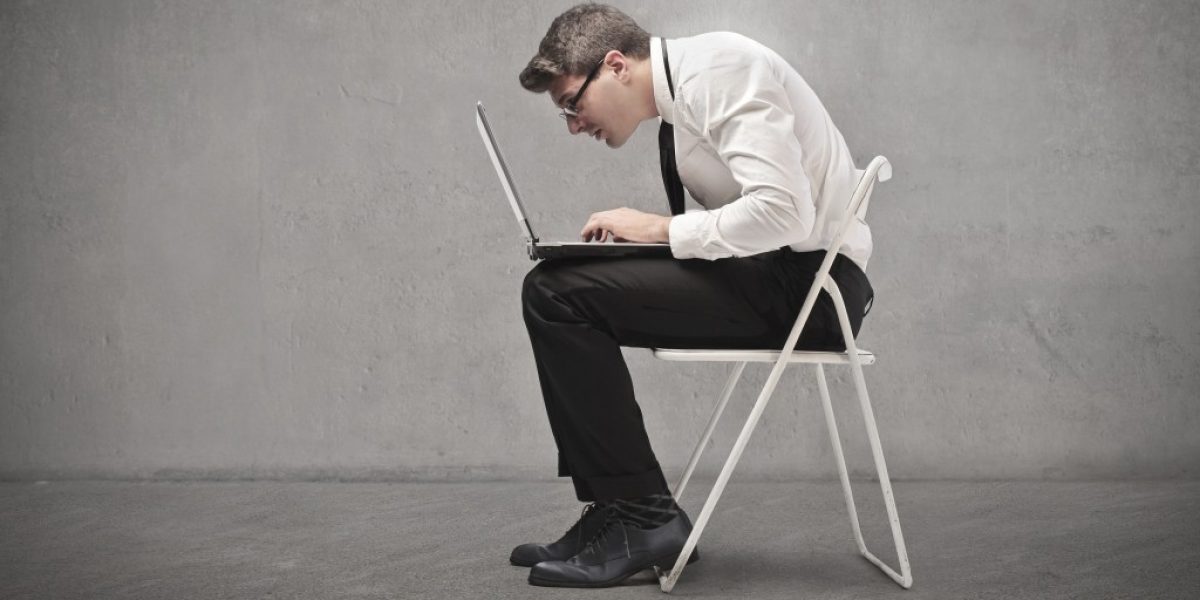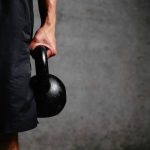How did the western world turn into such a sitting society? As nice as the chair and personal home computer might have been for us, they’ve been catastrophic to the health of the human species. The problem is that sitting won’t kill you…..at least not immediately. My goal with this article is to drop some knowledge about the serious dangers of living a sedentary lifestyle because better decisions come from better information.
Human evolution
Our bodies are designed for movement. Humans are a highly evolved animal that has managed to adapt to survive in every corner of the planet and our ability to do so and dominate earth is largely due to the fact that we move better and in more complex ways than any other species. Our machinery is designed to be in constant motion. For example, our lymphatic system works based on muscle pumps created by movement. Ever get “cankles” after a long drive or plane ride? That’s because without the calf firing there’s nothing to pump the blood from our legs back to the heart. Our basic physiology literally requires movement to function properly so why do so many people violate our basic physiology by sitting so much?
The control center of the body – the brain – is another structure that requires movement to function optimally. Ever notice that when you take an intense or difficult phone call that you want to stand and move around? A recent study showed that test scores shot up significantly simply by getting kids to stand when taking the test. The brain functions better with movement. FACT. Force kids to sit all day long and some of them get impulsive and feel the need to move and act out. Some would call this ADHD but not being able to focus when sitting for long periods isn’t a disease, its normal. The real truth is we seem to think that forcing kids to sit all day in school is normal but in light of what you’re about to read, it seems more along the lines of child abuse.
Consequences of sitting
A sedentary lifestyle is defined as 6 or more hours of sitting per day and is worse for your health than smoking. Look over the top 10 worldwide causes of mortality and sedentary lifestyle is the number 4 killer on the list (and is a huge contributor to most of the other 9). Diabetes, obesity, depression – all things that can be heavily linked to a sedentary and non-stimulating existence. The well respected Dr. James Levine even went as far to say that for every hour spent sitting, we lose 2 hours of life expectancy – that’s an eye opener. Looking at it from a physiotherapy perspective, sitting is a disaster for your muscles, bones and joints. Instead of babbling on about how crappy sitting is for you I would rather talk about things we can do to improve our situation but I need to mention a few things.
I can honestly say that 90% of all issues I treat in clinic are either directly or indirectly related to sitting. THAT’S INSANE. Hip pain, shoulder pain, neck pain, and the big one: low back pain are almost exclusively derived from consequences of a sitting position. The problem is that sitting wont kill you right away, its slow and drawn out torture. Its not a problem until it’s a problem and the mentality of most people is that no injury means no issues. People are literally walking around hunched over like Quasimodo and shuffling around walking like they had their glutes removed and think everything is fine and dandy. Then they start getting neck pain, and shoulder pain, and low back pain which somehow surprises them…. “This neck pain came out of nowhere, I never even hurt myself”. Every minute you spend sitting is hurting yourself and when you accumulate enough time in that position its devastating to your body.
Here’s an all too common picture: average Joe wakes up in the morning, makes breky and sits down to read the paper. Showers up, jumps into his car for a 30 minute commute to the office where he spends 8 hours sitting at a computer with his back rounded, pelvic floor disengaged (maybe why the adult diaper industry is worth over $1 billion), shoulders rounded, neck cranked into extension, only taking a couple breaks to empty his bladder, have lunch and maybe print off a fax. Jumps in the car, goes home, sits to eat dinner and then on the couch to watch TV until bed. Maybe Joe hits the gym for an hour workout along the way which he thinks offsets the sedentary day he’s had. My question isn’t how does Joe have pain without injuring himself, its how can Joe possibly NOT have any pain after punishing his body all day with poor positions.
We need to rethink our mindset on activity. With so many people “fitnessing” these days to keep in shape, we lose track of the fact that what you do with your body for most of your waking hours has a much more profound effect on your health than what you do for an hour of exercise everyday. Newsflash: an hour of exercise doesn’t offset all your daytime sitting hours in poor positions. We all know not using a muscle makes it weak – sitting removes the need to stabilize the core, back and abdomen so these muscles atrophy (shrink) and disappear. Next time Joe goes to pick up a pencil from the floor it shouldn’t be a shocker that he blows out his back because of the weakness he created by sitting all day.
This is my last point about the crappiness of sitting, I promise. I want to talk for a second about something slightly important: breathing. Breathing 101: efficient breathing involves using your diaphragm. When you inhale your abdomen should expand and when you exhale it should contract. Try this yourself: sit down and take a big breath in. What you will notice is that most of the motion when you breathe comes from your chest/neck shoulders. That’s a stress breathing pattern, its inefficient, and it fires up your stress hormone cortisol levels. Why does this happen? Because SITTING INHIBITS PROPER DIAPHRAGM FUNCTION.
Moral of the story: sitting is terrible for you. So what do we do?
Well, for starters not all sitting is the same. Sitting on the ground is an easy way to take a step in the right direction. It forces your joints into much larger ranges of motion and sitting on the hard ground makes you shift around frequently which is a good thing. In cultures that sit on the ground, hip and low back diseases are almost no existent
Benefits of standing
When you stand during the day you’re more productive, feel better, burn an extra 22 marathons worth of calories per year not to mention heavily reduce your risk of damaging your body and being in pain. That’s powerful stuff. When you start standing more often you realize how weak you have become by being allowed to sit in a chair. Your legs get tired, your feet hurt, your muscles get sore – all because things are used to being shut down. It’s a workout to stand all day.
Where do we start in the fight against sitting
Just like transitioning to a different style of running shoe takes time and should be done gradually, the transition to a standing existence needs to be gradual. Years of sitting will have taken a toll on your joints and going straight to standing all day will probably give you more trouble than benefit initially. Start by replacing an hour of sitting with an hour of standing every day and increase it by an hour each week.
Kelly Starrett is a physical therapist from the United States and is known by many for his groundbreaking approach to mobility work in his book The Supple Leopard. His new book Deskbound comes out tomorrow and will be a groundbreaking guide to breaking free of our sitting existence. Here are some principles from the book that can help guide you on your journey to becoming a better human:
1) Reduce optional sitting
This is a simple one. If you have the choice to sit or stand, make a better decision and stand. Some sitting is necessary: in a board meeting, in a car or airplane, taking a poo etc. BUT…You will quickly realize how much optional sitting is in your life so choose to stand.
2) For every 30 minutes you sit, move for 2 minutes
Set a reminder alarm if you need to but stick with it. Stand up, do some squats, lunges, arm circles, take 5 deep breaths in your belly, foam roll your back etc. Excuses don’t harm anyone but yourself, take some ownership and take the 2 minutes to become a more resilient human
3) Optimize your positions
If you need to sit, sit with good positioning. On the ground is better, if you’re in a chair or car make sure your upper back and shoulders aren’t rounded, your chin is tucked and your pelvis and ribs are aligned on top of each other.
4) Perform 15 minutes of maintenance on your body per day
Get in the routine of working on your mobility everyday. Pick a position that is hard for you to get into like the squat, arms overhead, touching your toes etc. Tissues shouldn’t hurt when pressure is applied, find an area stopping you from achieving the chosen position and start cleaning it up with the weapon of your choice – foam roll, softball, lacrosse ball all work great.
In Summary:
- Sedentary lifestyle (aka sitting) is a huge problem not enough people are talking about and is a major reason why so many live with pain on a day to day basis
- Humans are movement animals and our bodies are designed to function optimally with frequent movement
- Start right now by reducing optional sitting, moving every 30minutes, putting yourself in better positions and maintaining your body regularly
- Not moving is a maladaptation of the human species. Increase your movement and increase your quality of life. Simple
- Choosing to sit is making a choice to be unhealthy
- Sedentary lifestyle is the biggest threat to the health of humans so lets start addressing it and stop avoiding the big problem staring us right in the face.
Hope you find the information helpful and it motivates you to make a change to stand up for a better life and educate those around you.
-Nick





